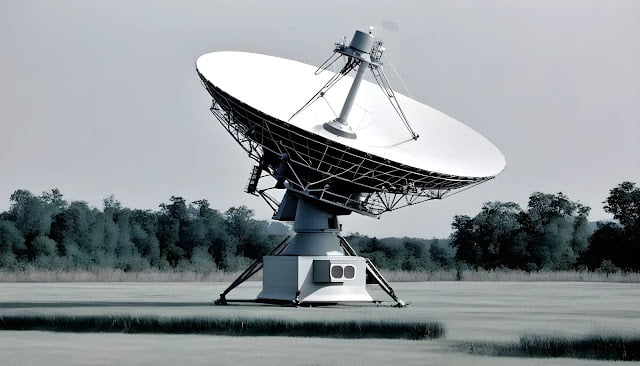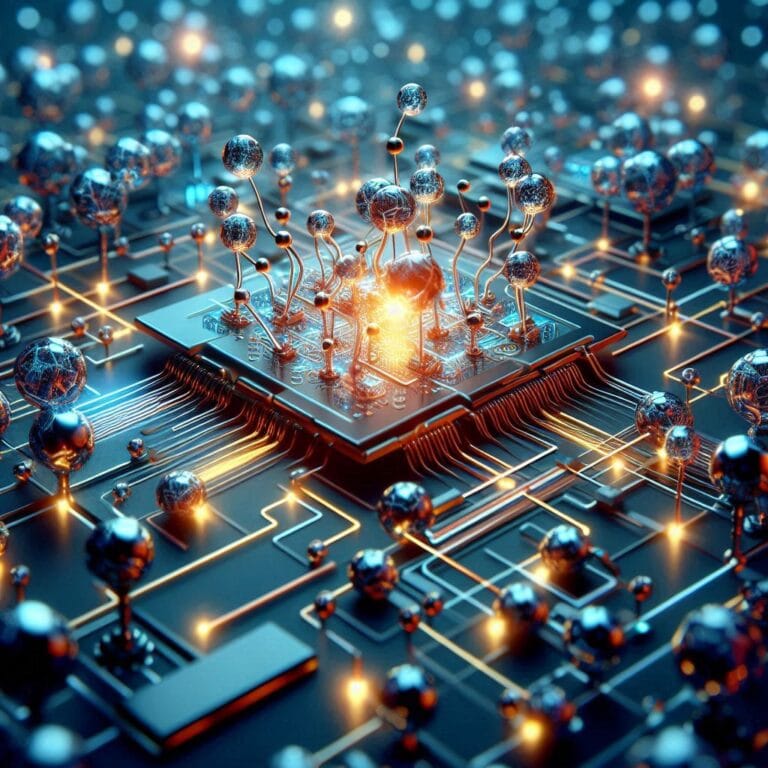Introduction to Artificial Photosynthesis
Artificial photosynthesis is an advanced renewable energy technology that emulates the natural process of photosynthesis, where plants convert sunlight, water, and carbon dioxide into energy. However, unlike its natural counterpart, photosynthesis artificial systems are engineered to produce sustainable fuels and essential chemicals directly from sunlight, water, and carbon dioxide.
The concept of artificial photosynthesis arose as scientists searched for sustainable energy solutions to reduce dependency on fossil fuels and combat climate change. By using specially designed materials and processes, artificial photosynthesis systems capture sunlight, split water molecules, and transform carbon dioxide into usable fuels like hydrogen or methanol. This technology has immense potential for transforming global energy production, offering a cleaner alternative to carbon-heavy fuels and contributing to long-term solutions for energy sustainability.
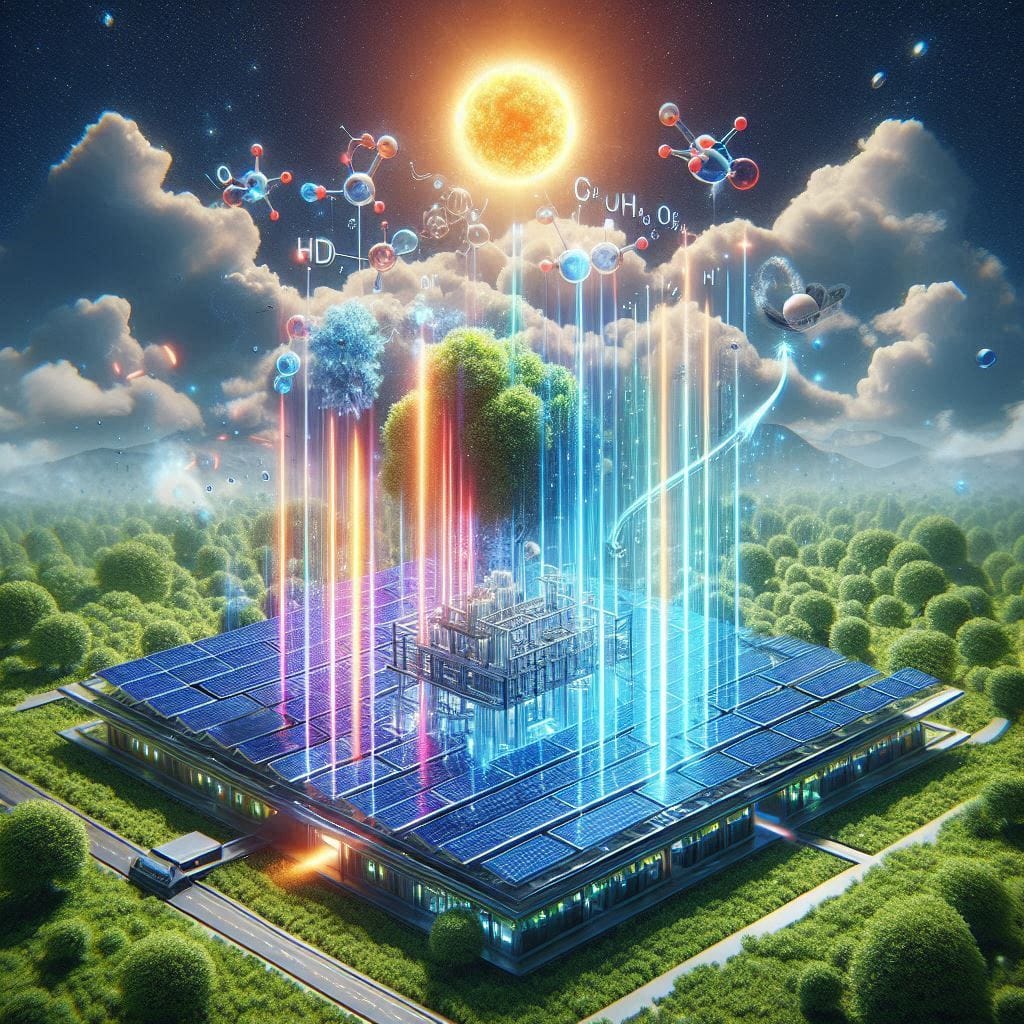
Artificial photosynthesis not only addresses the growing demand for clean energy but also helps sequester carbon dioxide, a significant greenhouse gas. Through this dual benefit, artificial photosynthesis could become a critical component in the fight against climate change, creating opportunities for sustainable development and greener energy infrastructures worldwide.
How Does Artificial Photosynthesis Work?
How does artificial photosynthesis work? At its core, Engineered photosynthesis replicates the complex processes of natural photosynthesis using engineered systems designed for maximum efficiency in capturing and converting solar energy. While plants naturally use chlorophyll to harness sunlight, artificial photosynthesis leverages advanced light-harvesting materials and catalytic processes to produce fuel and valuable chemicals from sunlight, water, and carbon dioxide.
- Light Absorption: The process begins with light absorption, where specialized materials, such as artificial chlorophyll or metal-based photocatalysts, capture sunlight. Similar to natural chlorophyll, these materials absorb light and generate excitons—electron-hole pairs—that carry the absorbed energy. These excitons transfer energy to a catalyst, often made from metals like platinum, cobalt, or ruthenium, to initiate the subsequent chemical reactions necessary for Engineered photosynthesis.
- Water Splitting: In this phase, artificial photosynthesis systems separate water molecules into hydrogen and oxygen. This process is crucial because it generates the electrons and protons required for further reactions. Advanced catalysts facilitate this water-splitting reaction, with some systems using catalysts based on manganese or iridium, mimicking the efficiency of natural enzymes in plants. The hydrogen produced in this stage can be collected as a clean fuel, which is a valuable outcome of artificial photosynthesis, as hydrogen can be stored and later used for energy.
- Carbon Dioxide Reduction: The final stage in artificial photosynthesis is the reduction of carbon dioxide into fuels or valuable chemicals, such as methanol, formic acid, or other hydrocarbons. This stage is comparable to how plants use carbon dioxide in photosynthesis, transforming CO₂ into organic compounds. However, artificial systems often achieve carbon reduction with greater efficiency due to engineered catalysts like copper or iron complexes. These catalysts help convert carbon dioxide into carbon-based fuels, providing a renewable alternative to fossil fuels.

In artificial photosynthesis, the transformation of solar energy into usable fuel represents a groundbreaking approach to renewable energy. Solar energy conversion here is far more efficient than in natural photosynthesis due to the precision of engineered systems and optimized catalysts. As researchers continue developing and refining the materials and processes involved in artificial photosynthesis, there is growing potential for even higher efficiencies and stability. Future advancements may lead to large-scale applications, making engineered photosynthesis an increasingly viable and sustainable alternative to traditional energy sources.
The Role of Artificial Chlorophyll in Energy Conversion
Artificial chlorophyll is a specially engineered pigment that mimics the structure and function of natural chlorophyll but often exhibits enhanced stability and efficiency. Created using bio-inspired materials, artificial chlorophyll is essential in energy transfer mechanisms within artificial photosynthesis systems.
In natural photosynthesis, chlorophyll molecules capture photons from sunlight and convert them into energy for the plant. However, in artificial systems, synthetic pigments like artificial chlorophyll play a more refined role by capturing a broader range of light wavelengths, leading to more effective energy conversion. This ability to absorb additional light spectra enables Engineered photosynthesis to perform under various light conditions, giving it an edge over natural processes.
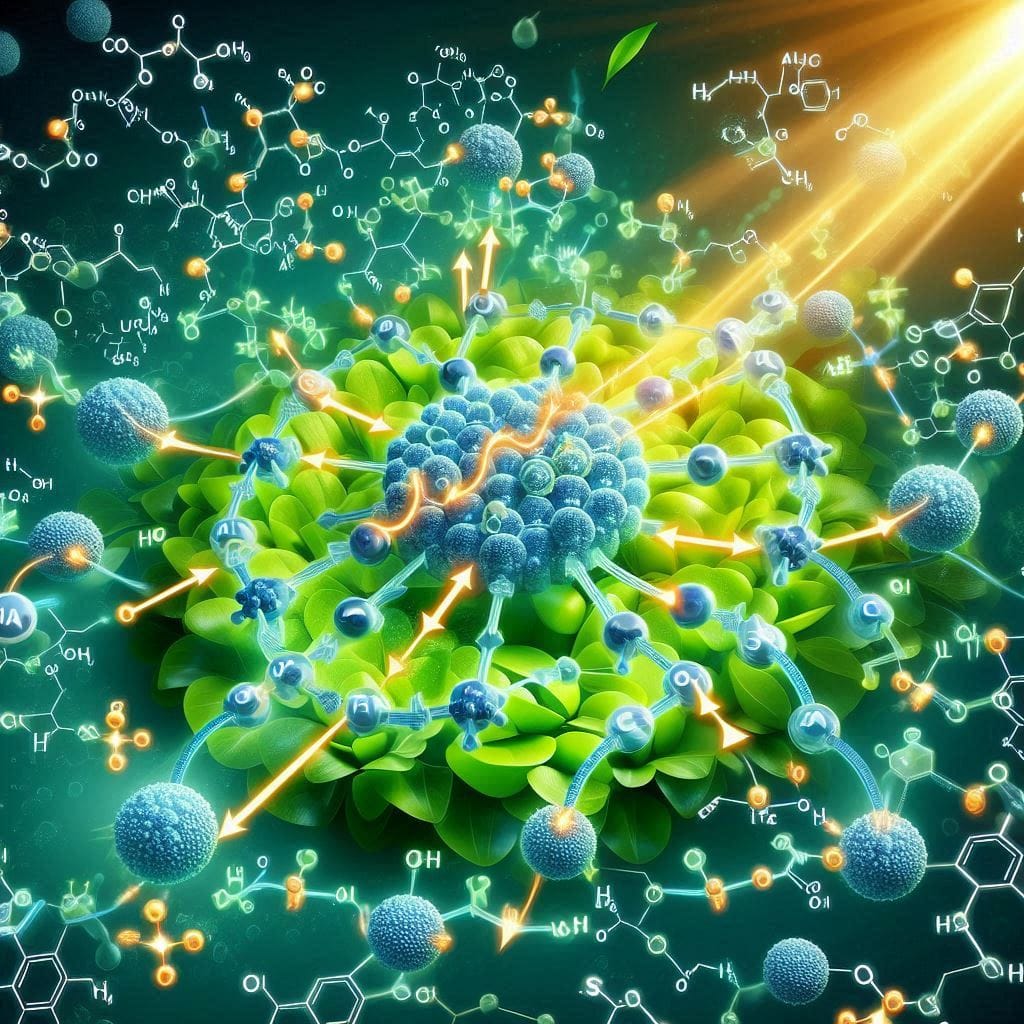
Furthermore, artificial chlorophyll is often more durable and can withstand extreme conditions better than its natural counterpart, making it ideal for large-scale, industrial applications. By acting as an efficient energy transfer mechanism, artificial chlorophyll allows the system to harvest sunlight effectively and transfer it to the catalyst for fuel production. In the success of modern Man-made photosynthesis versatility and efficiency play important roles.
Photosynthesis Byproducts in Artificial Systems
One of the main photosynthesis byproducts in artificial systems is hydrogen production. Unlike natural photosynthesis, which primarily produces glucose and oxygen, artificial photosynthesis can generate a range of useful byproducts, including hydrogen gas, carbon monoxide, or even liquid fuels like methanol. Each of these byproducts has potential applications in various industrial sectors, especially as clean fuel alternatives.
- Hydrogen Gas: As one of the most prominent byproducts, hydrogen serves as a versatile, clean fuel that produces only water as a byproduct upon combustion. This makes it an ideal choice for fuel cells and other green technologies focused on reducing emissions.
- Carbon Capture and Utilization: Artificial photosynthesis systems are also adept at capturing carbon dioxide from the atmosphere. This captured carbon can then be converted into fuels or chemicals, helping to reduce overall greenhouse gases. Through carbon capture processes, artificial photosynthesis not only reduces reliance on fossil fuels but also helps mitigate the harmful impacts of carbon emissions on climate change.
- Methanol and Formic Acid: Some artificial photosynthesis systems are capable of producing liquid fuels like methanol and formic acid, which are easier to store and transport than hydrogen gas. These clean fuel alternatives can be integrated into existing energy infrastructures, providing a seamless transition toward sustainable energy.
Overall, the byproducts of artificial photosynthesis offer a pathway to a renewable energy technology that is both sustainable and versatile, contributing to greener industrial processes and helping to close the carbon cycle in a sustainable way.
Potential Advantages of Artificial Photosynthesis Over Natural Photosynthesis
Artificial photosynthesis offers several efficiency improvements compared to natural photosynthesis, particularly in converting sunlight into usable fuel. While natural photosynthesis is highly efficient in nature, it is often constrained by environmental factors such as light intensity, temperature, and the availability of water. Photosynthesis artificial systems, however, can be designed to overcome many of these limitations.
One of the most significant advantages of artificial chlorophyll and engineered systems is the ability to operate under a wider range of environmental conditions. Unlike plants, which depend on specific climates, artificial systems can be optimized to work in extreme environments where natural photosynthesis would fail. For instance, these systems can be designed to capture light from the entire solar spectrum or to function efficiently in low-light conditions, such as indoors or in space applications.
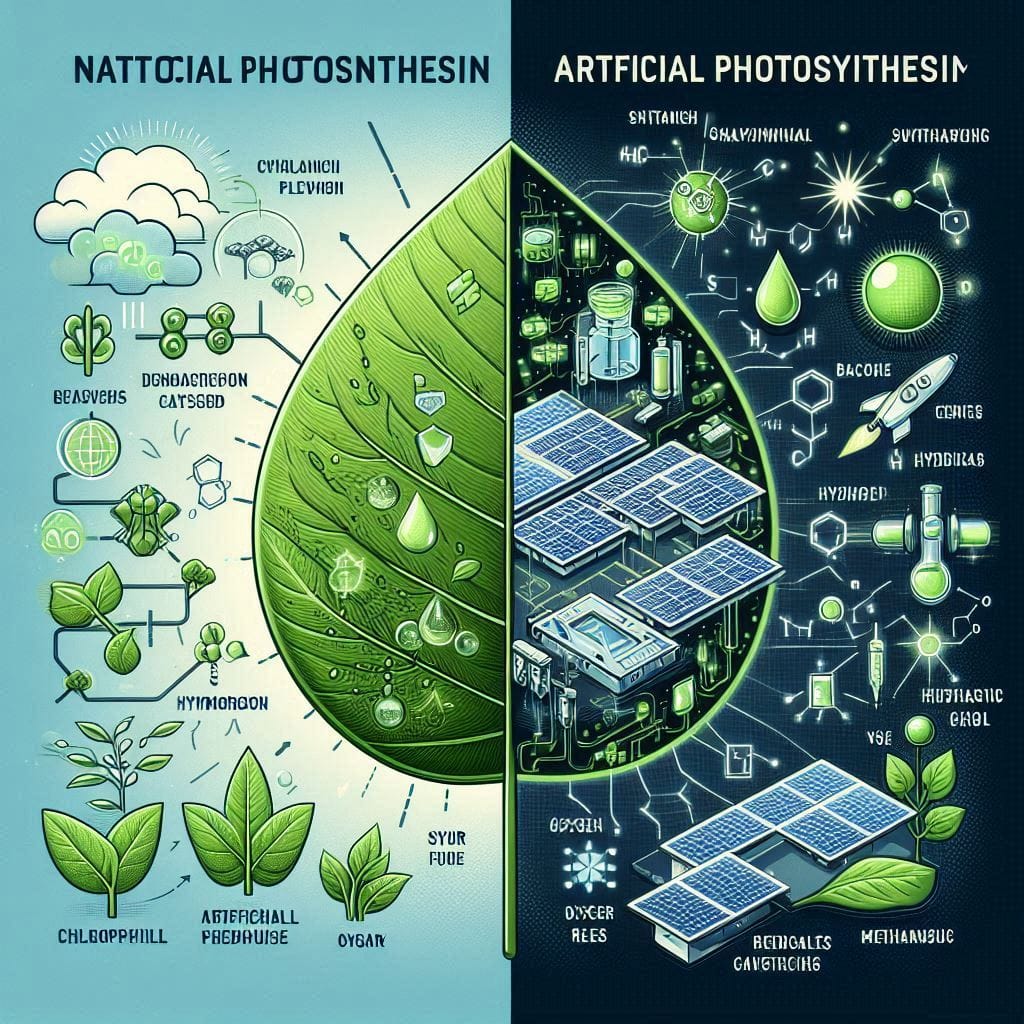
Additionally, resource utilization in Man-made photosynthesis can be significantly more efficient. While natural photosynthesis relies heavily on agricultural land and large amounts of water, artificial systems can be deployed in a variety of settings—such as deserts, rooftops, or even urban areas—without competing with food production or land use. These advancements in industrial scalability make artificial photosynthesis a promising candidate for meeting the growing global demand for clean energy.
As a result, artificial photosynthesis could offer a more adaptable, high-efficiency solution to renewable energy challenges, capable of scaling for large industrial applications and producing energy where traditional methods would be ineffective.
Photosynthesis Disadvantages and How Artificial Systems Address Them
While natural photosynthesis plays a crucial role in sustaining life on Earth, it also has several photosynthesis disadvantages that hinder its widespread application in energy production. One major drawback is energy inefficiency—natural photosynthesis typically only converts around 1-2% of sunlight into usable energy, a rate that is far too low for large-scale energy production. Additionally, natural photosynthesis is highly dependent on water use and land dependency, which are significant limitations in the face of climate change and growing water scarcity.
Artificial photosynthesis, however, offers a solution to these challenges. By utilizing engineered catalysts and synthetic materials like artificial chlorophyll, researchers can develop systems that achieve much higher energy conversion efficiencies, approaching levels comparable to solar cells. These systems also require far less water than natural photosynthesis, making them an ideal solution for water-scarce regions.
Moreover, while traditional agricultural practices depend on vast expanses of land, Engineered photosynthesis can be deployed in diverse environments, including urban rooftops and industrial settings, without the need for arable land. This makes it a highly flexible and scalable alternative to traditional biofuel production.
By bypassing these critical limitations, photosynthesis artificial has the potential to revolutionize energy production, offering a cleaner, more sustainable option for the future.
Challenges Facing Man-made Photosynthesis Development
Despite its vast potential, artificial photosynthesis faces significant hurdles that must be overcome for widespread implementation. One of the primary technical challenges is the cost and availability of materials. Currently, materials such as artificial chlorophyll and photocatalysts—key components for mimicking natural photosynthesis—are expensive and often difficult to produce in large quantities. These high material costs limit artificial photosynthesis systems’ scalability and commercial viability. Researchers are exploring alternative, cheaper materials like nanomaterials or earth-abundant catalysts, but these are still in the experimental stages. Efforts to lower the production costs and increase the stability of these materials are critical for making engineered photosynthesis a viable alternative to current energy solutions.
In addition to cost, scaling up artificial photosynthesis from small laboratory prototypes to industrial-scale systems is another major challenge. While small-scale systems have demonstrated success in controlled conditions, scaling them up involves overcoming issues such as the efficient conversion of light into energy on a larger scale. Furthermore, artificial systems must be designed to optimize energy storage since energy captured by the system is often intermittent and needs to be stored for later use. The technology for cost-effective and durable energy storage is still in development, with research focusing on advanced battery technologies and solar fuel production.
Moreover, while artificial photosynthesis aims to replicate natural photosynthesis, it must also deal with the added complexity of dealing with environmental fluctuations such as varying light conditions and temperatures. Optimizing systems to function reliably across different environments remains a key challenge. Nonetheless, ongoing research in materials science, catalytic engineering, and solar energy storage technologies is gradually addressing these issues. Innovations in artificial intelligence (AI) and machine learning are also playing a role in accelerating the development of more efficient systems by helping scientists better model chemical processes and predict optimal material combinations. As these technologies evolve, Engineered photosynthesis may become more practical and efficient in the near future.
The Future of Artificial Photosynthesis and Emerging Trends
The future of artificial photosynthesis holds great promise, particularly as advancements in materials and catalytic processes continue to evolve. As global concerns about climate change intensify, clean energy technologies like artificial photosynthesis are gaining momentum. One of the most exciting prospects is the integration of Man-made photosynthesis with other renewable energy systems. Traditional solar panels, for example, can capture sunlight, but they are limited by the inability to store that energy. Artificial photosynthesis, however, can generate and store fuel directly from sunlight, water, and carbon dioxide, providing a unique solution to energy storage and distribution challenges. This integration can lead to a more resilient, diversified energy grid, especially in regions with intermittent energy demand or where solar and wind generation are inconsistent.
In the coming years, industrial applications of artificial photosynthesis are expected to expand beyond fuel production. Researchers are investigating its potential to capture and store carbon dioxide (CO2), thereby helping mitigate climate change. Artificial systems could be designed not only to generate renewable energy but also to act as a carbon capture tool, extracting CO2 from the atmosphere and converting it into useful compounds. This would complement existing technologies such as direct air capture, providing a more scalable and energy-efficient solution to global carbon emissions.
Additionally, artificial photosynthesis may also be integrated into sustainable manufacturing processes. For example, it could be used to produce sustainable chemicals, fertilizers, or hydrogen as a clean fuel for various industries. Hydrogen production via Engineered photosynthesis could offer an alternative to fossil fuel-derived hydrogen, with zero emissions. Furthermore, research in biohybrid systems—systems that combine biological components with artificial materials—could provide innovative solutions for high-efficiency solar fuel production.
As research progresses, the future of artificial photosynthesis will likely bring forth cost-effective, highly efficient systems. These systems could revolutionize energy production and play a pivotal role in the global transition to sustainable energy, offering cleaner, more reliable solutions for power generation and reducing dependence on fossil fuels.
Conclusion
In conclusion, artificial photosynthesis presents a transformative opportunity for advancing sustainable energy solutions. By mimicking the natural process of photosynthesis, it can offer a method of generating, storing, and using energy in a way that is far more sustainable than current technologies. While significant challenges remain, particularly in terms of material costs, scaling up production, and optimizing energy storage systems, ongoing research and technological innovations are progressively addressing these hurdles.
As the future of renewable energy evolves, artificial photosynthesis stands out as one of the most promising technologies for meeting global energy needs while simultaneously reducing carbon emissions. Its ability to produce clean, renewable fuels directly from sunlight, water, and carbon dioxide holds the potential to mitigate climate change, reduce reliance on fossil fuels, and ensure a more sustainable energy future for generations to come. As the technology matures, its integration into industrial processes, carbon capture systems, and sustainable agriculture will further amplify its importance in creating a greener, cleaner world.
Read the articles below to learn more about advancing sustainable energy solutions




